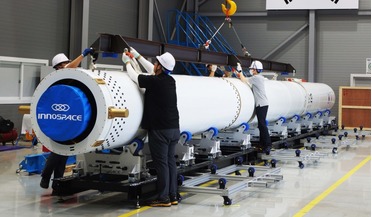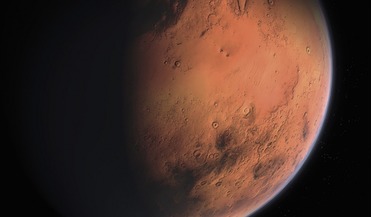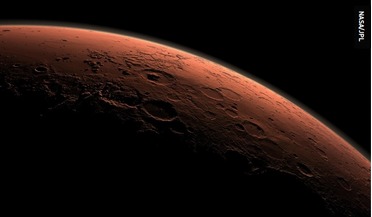 29 December 2021
Success so far means JWST has enough fuel to extend its science lifetime, NASA say
29 December 2021
Success so far means JWST has enough fuel to extend its science lifetime, NASA say
Following its successful launch on 25 December, and the completion of two mid-course correction manoeuvres, the JWST mission team have now determined that the observatory should have enough propellant to allow support of science operations in orbit ...
 14 June 2022
Countdown to launch vehicle test for South Korea
14 June 2022
Countdown to launch vehicle test for South Korea
.... It has a height of 16.3 metres, a diameter of one metre, and weighing 9.2 tons. INNOSPACE says the use of both solid fuels and liquid oxygen helps simplify the structure and delivers the advantage of thrust control. HANBIT will...
 October 2015
From the kitchen… to the stars?
October 2015
From the kitchen… to the stars?
... allowed us to define a set of guidelines for the development of the engine and its components using LOX + LNG fuel. In 2006, we moved to the next stage of research involving the development, manufacturing and testing of engine S5.86. Its combustion...
 May 2021
In-situ propellant design for Mars ascent vehicles
May 2021
In-situ propellant design for Mars ascent vehicles
... Technologies Inc, Istanbul, Turkey. His expertise is the development of hybrid rocket technologies using paraffin wax-based fuels and Metal/CO2 combustion for Mars ascent vehicle propulsion systems. In addition, he has research experience in CubeSat...
 July 2021
Nitrous oxide – a green propellant for commercial space exploration
July 2021
Nitrous oxide – a green propellant for commercial space exploration
...developed. A small thruster, Hecht used nitrous oxide as an oxidizer in combination with aqueous methyl alcohol (28 percent methanol) fuel. It was intended for military applications. The small bipropellant engine was never used in a weapon due to two...
 June 2022
Protecting crews in interplanetary ships and space colonies from the space environment
June 2022
Protecting crews in interplanetary ships and space colonies from the space environment
... a squadron assembled in a package has an additional advantage. Testudo allows a single cooling centre for cryogenic components of rocket fuel and, due to the effects of scale, will provide the maximum specific power unattainable for a single rocket...